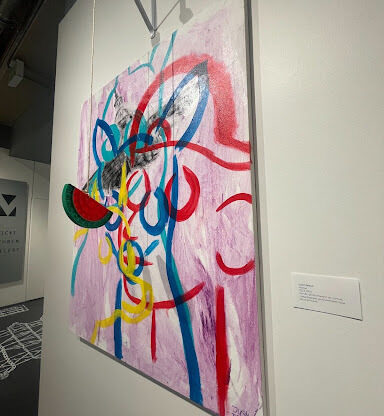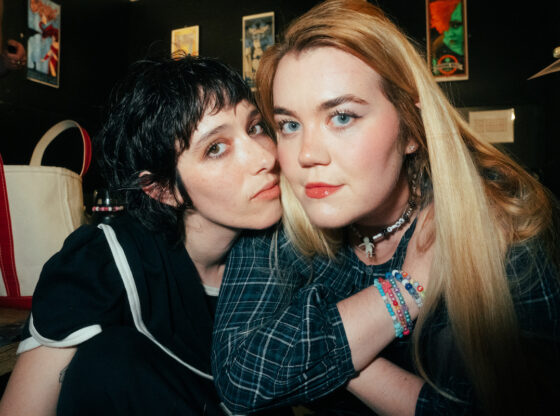Harry Styles’ third album, “Harry’s House” demonstrates a masterclass in songwriting. Pulling stylistically from Phil Collins, Simon and Garfunkel, Daft Punk and even Ed Sheeran, Harry Styles walks a fine line between eclecticism and cohesiveness.
After his self-titled first release, Styles delivered a much more polished work with “Fine Line;” though fans of his first album may have missed his raw, rocking and confessional side, he did show maturity despite being a bit cagey. Now, it seems Styles is determined to show all he’s learned in the five years since his first release.
From the opening track, “Music for a Sushi Restaurant,” Styles immerses us into the euphoric domestic daydream that is “Harry’s House.” Introducing us to the driving, grooving drums, stacked vocal harmonies, funky guitars and lyrical sensory bombardment found throughout the album in under a minute. Everything about “Harry’s House” seems too good to be true, but you’ll forget all about those worries as soon as the horn section makes their first glamorous appearance.
When the ironic vocal scatting comes in, we realize that this is what Jacob Collier thinks he sounds like, as Styles floats between technical vocal passages, hefty chord structures and pop-isms we know and love. The track feels like a fun and flirty first date, lending itself to be followed perfectly by “Late Night Talking.”
The second track flies by in quirky David Bowie fashion; Harry’s falling fast. With more minimalist drumming and fun synth pads, the track is reminiscent of “Let’s Dance.”
The first hints that there could be trouble in paradise are revealed on the third track, “Grapejuice.” At first, it may be easy to brush off the slower tempo as a necessary change of pace, though the lyrics—“There’s just no getting through without you”—in the chorus suggest a dangerous sense of dependence developing.
The single and fourth album track, “As It Was,” brings to mind the confessional, relatable Styles of his debut album that fans have begun to miss. A snapshot of life as a sensitive twenty-something, Styles talks about loneliness and the dull ache of parting ways with a past lover only to develop lives without each other. It’s a feeling he can’t shake, but he tries desperately to ignore: “I don’t wanna talk about the way that it was.” Pop’s biggest superstar really is just like us, expressing yet another snapshot of late twenties life, guilt over not calling a parent enough, and even wallowing a bit in self-pity: “Why are you sitting at home on the floor? What kind of pills are you on?”
Despite a hook so infectious it gives COVID-19 a run for its money, the chorus is a letdown even on the first listen. The lack of dynamic contrast between the verse and the chorus is to blame, leaving a dissatisfying taste in one’s mouth upon realizing what was thought to be the pre-chorus will not be lending itself to a bigger chorus. Still, the bells that come in during the final chorus do sound great and give us a semblance of what we craved.
The Chic-inspired “Cinema” is needlessly salacious. Does Harry Styles really need to solidify his sex symbol status any further? Lyrically, there’s little one can say because little is said. Musically, the track hearkens back to the work of Nile Rodgers’ with Daft Punk, and, despite being about half the runtime, the track feels just as long as their six-minute plus “Get Lucky.” There’s really not enough going on to excuse playing the same two-chord groove with little variation for four minutes straight. Sorry Harry, but those vocal stacks just aren’t as cool as Daft Punk’s vocoder.
The album is immediately redeemed with its ninth track, “Daydreaming.” Playing more heavily on the pensive dream state found throughout the album, this track brings back the horn section and vocal stacks first heard on the opening track, now hinting that these soundscapes may indicate the possibility of a concept album.
The groove on the first two choruses feels so good it doesn’t even matter that there aren’t any lyrics. With Stevie Wonder-esque inflection, Styles’ belting of the lyric, “Living in a daydream,” delivers a satisfying addition to the final chorus. Not to mention, some interesting chords that you would not expect to hear in a pop album, which occasionally brings the piano to the forefront, solidifying its Steely Dan sound.
As the album nears its end, “Keep Driving” gives us a glimpse of Styles’ life that one can taste, smell and touch. The imagery of this lifestyle cascades upon the listener at an ample, yet easy pace helped by Sarah Jones’ sensitive drum feel. The lyrics are interspersed with concerned, yet endearing comments like “I will always love you” and “Should we just keep driving?”
Things devolve into chaos as the images of this lifestyle become frantic and hard to understand. Life seems to be moving at a breakneck pace, and though there is “a small concern with how the engine sounds,” things are moving too fast to do anything but “just keep driving.”
This might not be a breakup album, but it is certainly an “it’s complicated” album. The Passion Pit-inspired “Satellite” coolly describes how Styles is kept at a distance in a relationship, but seemingly doesn’t mind until he admits he is “spinning out.” The song is catchy, but, unfortunately, the catchiest line of all—“Spinnin’ out, waitin’ for ya”—is identical in melody to that of the Counting Crows verse melody on “Accidentally in Love.” The climax of the song is also just a bit too close for comfort to Passion Pit’s “I’ll be Alright.”
Styles opts for a more acoustic sound with “Boyfriends,” and “Matilda,” reminding us of his first album. “Boyfriends” is heavily inspired by Simon and Garfunkel, though avoids the mistake of being too derivative of any one song. The song may appear to be pandering to his largely young, female audience with its “men are trash” message, but it is revealed in the penultimate line that “you lay with him as you stay in the daydream.” His daydream.
Styles is actually singing about himself. This makes him even more real, as he is fully aware of his ability to be a toxic, horrible guy who takes the woman in his life for granted. He is multifaceted like anyone else. Even the great Harry Styles isn’t perfect, and the only person his audience would believe to tell them that is the man himself as if this is an epiphany he had in his own reminiscent daydream.
The album closes with “Love of my Life,” a dreary ballad with blatant lyrics that can only really be tolerated as the final track. Though the verses are somewhat redeeming, the chorus is just so overt. Listeners have come to expect more from a Harry Styles chorus, especially after hearing 12 previous tracks that don’t commit this mistake. However, there is an understanding that because this is the final track, things are finally clear to Styles, having now processed everything since the release of “Fine Line” three years ago, in a mesmeric 13-track daydream.
Though this album was more eclectic and took more risks than “Fine Line,” I prefer it this way. “Fine Line” had very few tracks Harry listeners wouldn’t enjoy, which was often boring, as it was cohesive to the point of monotony. Styles also managed to make a more mature and cohesive effort than his first album with this release.
Overall, the album gives us some new sides of Harry Styles to walk away with while still maintaining the parts of him we know and love. He continues to deliver confessional tracks that make him the mysterious, yet relatable, pop phenomenon that he is.
It seems that he managed to find a good middle ground, while simultaneously breaking new ground for himself. Walking away from this album, I was content with the six or so fantastic tracks I received, even if the rest missed the mark for me. Harry Styles at his best is fantastic, and even at his worst you can still tell he’s making an effort, and though every track isn’t always uniquely Harry Styles, they are at least covered in his fingerprints.











